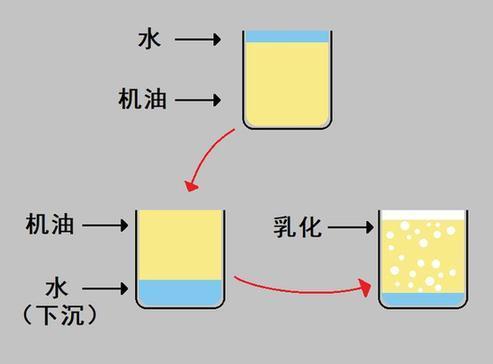张培男1,2,佟伟军1,孙洪生2,何龙英2,李令保2,吴海磊3
1.苏州大学公共卫生学院,江苏 苏州215123;2.昆山出入境检验检疫局;3.南京出入境检验检疫局
摘要:目的了解出入境人员丙型肝炎(HCV)感染水平,研究HCV感染者的传染性及影响感染的危险因子。方法采用酶联免疫吸附试验(ELISA)筛查出入境人员抗-HCV,并对150份抗-HCV阳性血清采用实时荧光定量PCR法测定HCVRNA病毒载量,以性别、年龄、抗-HCV阴性、HCVRNA阴性、1∶4比例为匹配条件,选择600例为阴性对照组。采用单因素和多因素非条件Logistic回归分析。结果 23781名出入境人员传染病监测体检中,检出抗-HCV阳性150例,检出率为0.63%。男女间感染HCV的几率均等;抗-HCV阳性率随年龄增长而升高,各年龄组间差异有统计学意义(χ2= 86.065,P<0.001);外籍人员抗-HCV阳性率显著低于中国籍,两者差异有统计学意义(χ2 =12.376,P<0.005);78.67%抗-HCV阳性者HCV RNA病毒处于复制状态,抗-HCV滴度≥ 1∶64感染者HCVRNA病毒载量均≥1.02 × 104 copy/ml,各抗体滴度间病毒载量有显著性差异(χ2 =136.593,P<0.001);经单因素回归分析发现,年龄、国籍、谷丙转氨酶(ALT)、天门冬氨酸转氨酶(AST)、直接胆红素(DBIL)、尿素(BUN)、总胆固醇(CHOL)、低密度脂蛋白(LDL)等8个因子均有统计学意义,对这8个因子进行多因素Logistic逐步回归分析,年龄、ALT、LDL等3个因子进入模型。结论78.67%出入境人员HCV感染者具有传染性,抗-HCV滴度≥1∶64指标可作为HCV具有传染性的判断指标;影响HCV感染的危险因子有年龄、国籍、ALT、AST、DBIL、BUN、CHOL、LDL等8个。
关键词:出入境人员;丙型肝炎;传染性;危险因子
中图分类号:R155.5 文献标识码:B
Study on infectious and risk factors of HCVamong entry-exit personnel
ZHANG Pei-nan*, TONG Wei-jun, SUN Hong-sheng,HE Long-yin, LI Ling-bao, WU Hai-lei
*Suzhou University, Suzhou, Jangsu215123,China
Abstract: Objective To analysis the level of hepatitis C(HCV)infection and theinfectivity and risk factors of HCV infection among entry-exitpeople. Methods Enzyme-linked immunosorbent assay(ELISA) screening was used for testing hepatitis C virus antibodies(anti-HCV) among entry-exit people. Real-time fluorescentquantitative PCR method was used for the determination of 150 casesof positive anti-HCV RNA in Sera of viral load. 1∶4 matchedcase-control study was conducted.The objective with same sex, age,anti-HCV negative,HCV RNA negative were recruited as matchedcontrols. Single-factor and multifactor non-conditional Logisticregression was conducted to analysis the differences between theanti-HCV positive group and negative control group. Results A total of 150 anti-HCV positive were foundamong 23 781 entry-exit people,with positive rate of 0.63%. Man andwomen had the equal chance of HCV infection. Anti-HCV-positive rateincreased with age (χ2 = 86.065,P<0.001). Anti-HCV positive rate offoreign crowd was significantly lower than populations in China(χ2= 12.376,P<0.005). HCV RNA virus was in replication status among78.67% Anti-HCV-positive people. Viral load of HCV RNA was ≥1.02 ×104 copy/ml among those people with anti-HCV titer ≥1∶64.Viral load of HCV RNA was significant difference among people withvarious levels of antibody titers(χ2 = 136.593,P<0.001).Single-factor non-conditional Logistic regression analysis showed 8risk factors including the age,nationality, ALT, AST, DBIL, BU,CHOL and LDL had significantly statistical difference. The riskfactors were taken into multifactor non-conditional Logisticstepwise regression model. In which, 3 risk factors hadsignificantly statistical difference. Conclusion 78.67% anti-HCV positive of entry-exit people have infectious.Anti-HCV titer ≥1∶64 can be regard as the judgment index for HCVinfection. The age,nationality, ALT, AST, DBIL, BU, CHOL and LDLwere the risk factors of HCV.
Key words: Entry-exit people;Hepatitis C;Infectious;Risk factors
《中国国境卫生检疫杂志》2012年6月刊

 您当前位置:
您当前位置:





